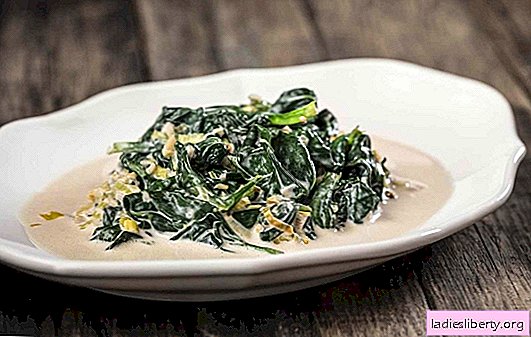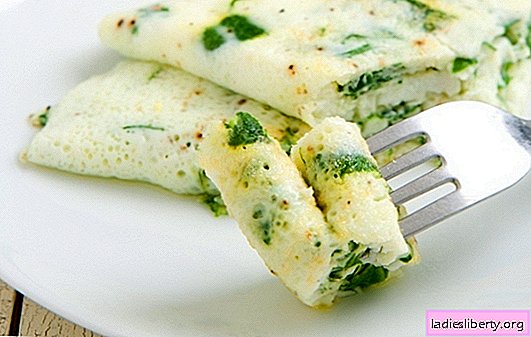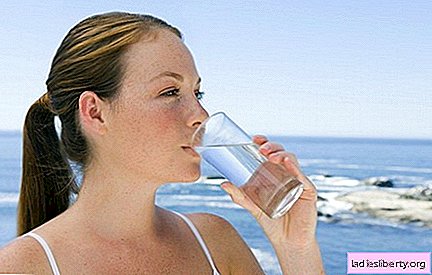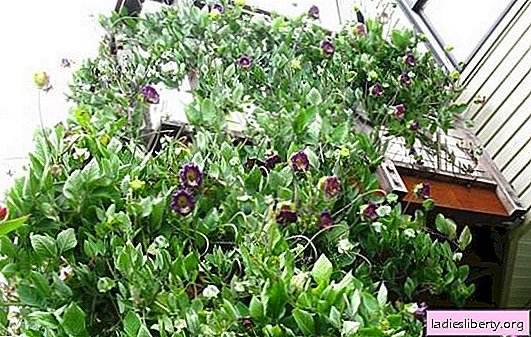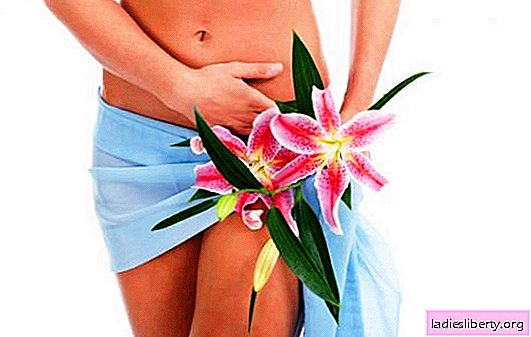
According to statistics, in recent years, 80% of women who consult a gynecologist are diagnosed with vaginal inflammation.
One of the causes of high morbidity is the asymptomatic course in some forms of vaginal inflammation and, in connection with this, untimely consultation with a doctor.
Vaginal inflammation (colpitis, or vaginitis) can be localized throughout the mucosa, or affect only the vestibule or only the inside.
Such an isolated course occurs in children and the elderly: inflammation of the vagina is limited to the entrance to the vagina.
It is explained by the anatomical and physiological characteristics of the body in these age periods.
In the elderly, this is associated with atrophy of the mucosa, because the hormonal function of the ovaries decreases.
But in weakened children, the spread of inflammation can occur higher and involve the entire mucosa (vaginitis) in the process.
Vaginal inflammation in pregnant women is associated with hormonal changes (there is a decrease in estrogen production) and immune status, which at this stage can also decrease.
Vaginal inflammation - causes
The main cause of vaginal inflammation is exposure to an infectious agent.
Colpitis depending on the pathogen is classified as:
- specific;
- non-specific.
The inflammatory process can occur:
- sharply;
- substructure;
- Under certain conditions, acquires a chronic course.
The causative agents of specific colpitis are bacteria, viruses, fungi, mycoplasmas, chlamydia, as well as pathogens of sexually transmitted diseases (Trichomonas and gonococci). With the defeat of Trichomonas and gonococci, the inflammatory process proceeds with pronounced symptoms.
Non-specific inflammation is caused by various cocci (streptococci, staphylococci), Escherichia coli and Pseudomonas aeruginosa.
In recent years, microbial associations are increasingly being detected as a causative agent of colpitis.
The state of local immunity also determines the course of the disease. With breakdowns of the immune system, the course becomes chronic with frequent exacerbations.
For the occurrence and development of colpitis, only the presence of a pathological agent is not enough. Due to the fact that the integumentary epithelium of the vaginal mucosa is constantly updated, and 98% of the microflora of the mucosa are lactobacilli, the remaining 2% are conditionally pathogenic microorganisms, the vagina is protected from harmful influences. For this reason, conditionally pathogenic microflora cannot be an independent cause of inflammation. Lactobacilli are involved in the formation of glycogen from the cells of the dying epithelium of the mucosa, and turn it into lactic acid, maintaining a constant pH of 3.8 - 4.5. In such an environment, conditionally pathogenic microflora is not able to multiply. In addition, lactobacilli create a film on the surface of the mucosa to prevent inflammation and protect against infection.
Inflammation develops when the balance in the number of lactobacilli and conditionally pathogenic microflora is disturbed, or the pH of the medium changes for some reason. If the normal number of lactobacilli decreases, there is an increased reproduction of conditionally pathogenic microbes - inflammation occurs. Such deviations are mostly compensated by the body on its own, and the inflammation passes. In cases of reduced immunity, when the body can not cope with the resulting imbalances, inflammation develops and becomes a disease.
Factors provoking the occurrence of colpitis:
- injuries during douching, surgical interventions (abortions), diagnostic manipulations, etc.
- hygiene products that violate the pH of the environment;
- promiscuous sexual intercourse, frequent change of partners leads to a change in the composition of the microflora of the vagina;
- reception of antibiotics (long and uncontrolled).
Vaginal inflammation - symptoms
Symptoms of vaginal inflammation and complaints are the same:
1. White - pathological discharge from the vagina. The amount and type of vaginal discharge depends on the cause of inflammation and the course of the disease. In acute specific inflammation, white, profuse purulent in nature; in chronic inflammation - scanty serous discharge; with candidiasis - a large number of thick cheesy discharge; with trichomoniasis - purulent with the smell of rotten fish. With inflammation of any etiology, an admixture of blood may be present in the secretions due to a possible mucosal injury.
2. Itching or burning - most often accompanied by candidiasis. Sometimes they are so intense that they can lead to neurosis.
4. Urination disorder - occurs in cases of spread of infection to the urethra. It mainly occurs with specific inflammations.
5. In the elderly, a frequent symptom is dryness and discomfort in the vagina.
On examination, a gynecologist reveals hyperemia, edema of the mucosa and discharge.
The diagnosis of colpitis is established on the basis of characteristic complaints, clinical symptoms of the disease and laboratory tests: smear microscopy, bacteriological examination of the material from the vagina, urinalysis are performed.
Vaginal inflammation - treatment
Treatment for vaginal inflammation includes:
- elimination of the source of infection;
- normalization of the microflora of the vagina.
The main treatment method is antibiotic therapy. The antibacterial drug is selected according to the results of the examination, depending on the microflora seeded and its sensitivity to a specific group of antibiotics. It is used in tablet form, but it is possible topically in the form of suppositories or gels (Clindamycin, Hexicon, etc.): in this case, efficiency increases (the drug acts directly at the site of inflammation) and side effects on the body are reduced.
At the same time, symptomatic therapy is prescribed, including antimicrobial, anti-inflammatory, analgesics, antihistamines, antipruritic drugs, and if necessary, immunostimulants. The duration of antibiotic therapy is two weeks.
After control laboratory studies confirming the absence of a pathological agent, drugs are prescribed that restore the normal microflora of the vagina. For this purpose, eubiotics and probiotics containing lactobacilli and bifidobacteria are used, as well as vaginal suppositories containing lactic acid, which can increase the population of lactobacilli (Femiplex).
Since microbial associations are mainly detected as a pathogen during inflammation of the vagina, the use of drugs of different groups or their alternation is effective. Metronidazole, ofor, fluimizil are used.
Candidiasis is treated with antifungal drugs in the form of tablets (Fluconazole, etc.) or suppositories, ointments and creams (Candide, Pimafucil, Clotrimazole).
In the treatment of specific inflammation, both partners are subject to treatment.
Traditional medicine experience in the treatment of vaginal inflammation
When treating symptoms of vaginal inflammation, traditional medicine cannot replace antibiotics, eubiotics, and probiotics.
But they can be used for symptomatic treatment: to reduce itching and local inflammation, to accelerate tissue regeneration. Effective use of time-tested medicinal herbs:
- a yellow capsule (the plant is extremely toxic, careful handling is necessary) - an infusion is used: 1 tablespoon per glass of boiling water, leave for 15 minutes in a water bath, strain, dilute with cold boiled water, apply for douching for three weeks;
- zhkalipt round - a decoction of leaves is used: 1 tablespoon is poured with boiling water and continues to boil for 5 minutes. 1 tablespoon of the resulting filtered broth - per glass of cold boiled water; use for douching;
- calendula - 4 teaspoons of the finished pharmacy infusion - per glass of boiled water; apply for douching throughout the course of treatment;
- bee honey with water in a ratio of 1: 2; apply for the treatment of trichomonas colpitis: a gauze swab soaked in a solution, deeply enter the vagina for a day, then change to a new one. The duration of treatment is three weeks.
With severe itching, tampons soaked in sea buckthorn oil 2 to 5 times a day are used, and baths with chamomile infusion 2 to 3 times a day are also effective.
In no case should start treatment with folk remedies until the diagnosis is clarified, because this can lubricate the symptoms of vaginal inflammation or make it impossible to determine the causative agent of the disease.
No herbs can directly affect the causative agent of the disease. Their use is aimed at alleviating some symptoms of vaginal inflammation: itching, pain, to enhance local immunity. Therefore, traditional medicine is used in parallel or after the main drug treatment or during remission as a prophylaxis.
Some aspects of the prevention of vaginal inflammation
1. The main rule of prevention is personal hygiene (a personal towel, an agent for intimate hygiene, the use of condoms, and refusal to use tampons).
2. Timely access to a doctor and treatment of chronic diseases.
3. Refusal of synthetic underwear.
4. Wearing loose clothing.
5. Courses of vitamin and immunostimulating drugs.
Self-medication leads to a chronic process with an improperly selected antibiotic.
Untimely treatment started causes the development of complications, leading in the future to infertility.

